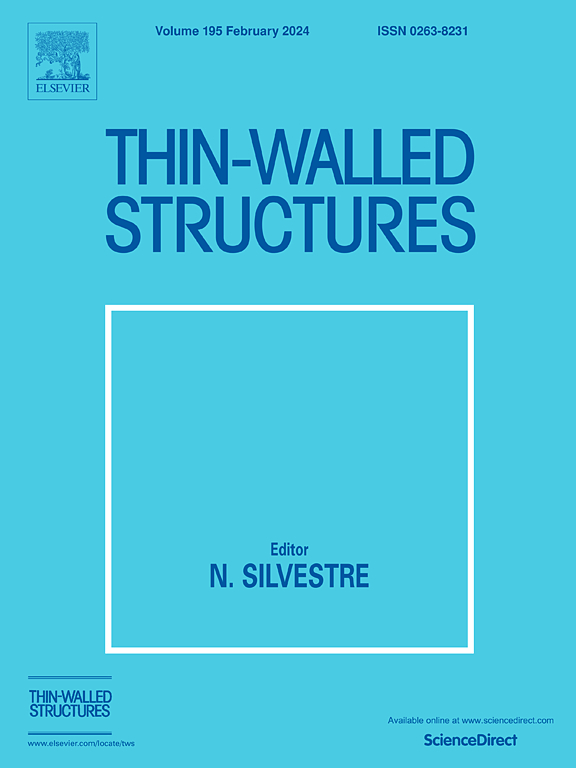Numerical study on creep-fatigue damage of titanium alloy pressure shell considering the effect of welding residual stresses
IF 5.7
1区 工程技术
Q1 ENGINEERING, CIVIL
引用次数: 0
Abstract
Welding residual stress poses a significant threat to the creep-fatigue strength of titanium alloy pressure shells. This paper presents a numerical approach for assessing the evolution of creep-fatigue damage in pressure shells, incorporating the effects of welding residual stress. Two conditions are considered: the application of a heat source on the internal surface and a heat source on the external surface. Based on a heat treatment process that considers the creep stress relaxation effect, welding residual stress reduction is performed on conical-column pressure shell. Numerical simulations of creep-fatigue damage evolution in conical-column pressure shell considering the welding residual stresses were conducted. The results show that the interaction between residual stresses and working stresses significantly diminishes the creep-fatigue life of conical-column pressure shell. Different welding processes lead to noticeably different evolution behaviors of creep-fatigue damage. Considering the residual stresses from external surface welding, the phenomenon of multiple source cracks occurs, with secondary cracks potentially propagating axially. Heat treatment can improve the creep-fatigue life to a certain extent. The research results can guide the design and processing of titanium alloy pressure shells used in deep-sea vehicles.
求助全文
约1分钟内获得全文
求助全文
来源期刊

Thin-Walled Structures
工程技术-工程:土木
CiteScore
9.60
自引率
20.30%
发文量
801
审稿时长
66 days
期刊介绍:
Thin-walled structures comprises an important and growing proportion of engineering construction with areas of application becoming increasingly diverse, ranging from aircraft, bridges, ships and oil rigs to storage vessels, industrial buildings and warehouses.
Many factors, including cost and weight economy, new materials and processes and the growth of powerful methods of analysis have contributed to this growth, and led to the need for a journal which concentrates specifically on structures in which problems arise due to the thinness of the walls. This field includes cold– formed sections, plate and shell structures, reinforced plastics structures and aluminium structures, and is of importance in many branches of engineering.
The primary criterion for consideration of papers in Thin–Walled Structures is that they must be concerned with thin–walled structures or the basic problems inherent in thin–walled structures. Provided this criterion is satisfied no restriction is placed on the type of construction, material or field of application. Papers on theory, experiment, design, etc., are published and it is expected that many papers will contain aspects of all three.
 求助内容:
求助内容: 应助结果提醒方式:
应助结果提醒方式:


